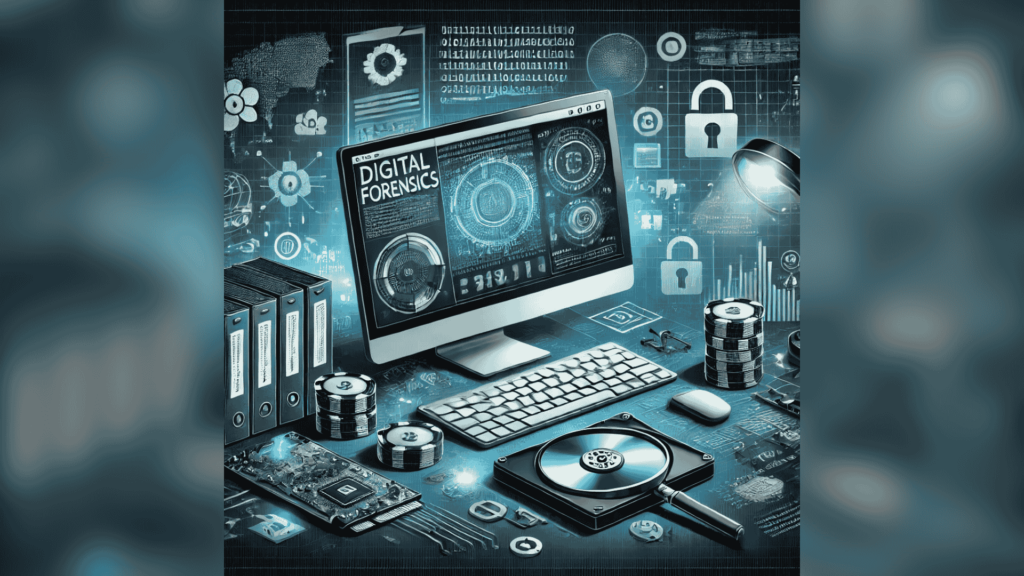
In the ever-evolving landscape of cybercrime, digital forensics has emerged as a critical discipline for investigating and understanding cyberattacks. It involves the identification, collection, analysis, and preservation of digital evidence to uncover the truth behind cyber incidents. From identifying the perpetrators to mitigating vulnerabilities, digital forensics plays a vital role in maintaining cybersecurity and ensuring justice in the digital age.
Understanding Digital Forensics
Digital forensics focuses on retrieving and analyzing data from electronic devices, networks, and storage systems. Its primary goal is to establish what happened, how it happened, and who was responsible. This field spans several domains, including computer forensics, network forensics, mobile device forensics, and cloud forensics. Each domain specializes in a specific aspect of digital investigations, providing a comprehensive approach to tracing cyberattacks.
Key Steps in Digital Forensics
- Identification: The process begins with identifying potential sources of evidence. This includes computers, mobile devices, servers, and network logs. Understanding the scope of the attack and the systems involved is crucial for an effective investigation.
- Preservation: Digital evidence is fragile and can be easily altered or destroyed. Forensic investigators use specialized tools and techniques to create exact copies of the data while ensuring the original remains untouched. This step ensures the integrity of the evidence, making it admissible in legal proceedings.
- Analysis: The collected data is meticulously examined to identify patterns, anomalies, and traces of malicious activity. This involves analyzing file metadata, network traffic, and log files to reconstruct the events leading to the attack.
- Documentation: Every step of the investigation is carefully documented. This includes detailed records of the tools used, evidence collected, and findings. Proper documentation is essential for presenting the evidence in court or sharing insights with stakeholders.
- Reporting: Investigators compile their findings into a comprehensive report, outlining the nature of the attack, the methods used, and recommendations for preventing future incidents. This report serves as a roadmap for remediation and legal action.
Tools and Techniques in Digital Forensics
Digital forensics relies on a range of tools and techniques to uncover evidence. Tools like EnCase and FTK (Forensic Toolkit) are used for analyzing data on computers and mobile devices. Network forensics employs packet capture tools like Wireshark to examine traffic and detect anomalies. Additionally, reverse engineering tools help analyze malware, revealing its behavior and purpose. Advances in artificial intelligence and machine learning are also enhancing forensic capabilities, enabling faster and more accurate analysis.
Challenges in Digital Forensics
Despite its importance, digital forensics faces several challenges. The sheer volume of data generated by modern systems can overwhelm investigators, requiring efficient tools and strategies for analysis. Encryption and anonymization techniques, while critical for privacy, can hinder forensic investigations by making it difficult to access evidence. Moreover, the rapid evolution of technology means forensic methods must constantly adapt to new devices, platforms, and attack vectors.
The Role of Digital Forensics in Cybersecurity
Digital forensics is not just about investigating incidents after they occur; it also plays a proactive role in cybersecurity. Insights from forensic investigations help organizations identify weaknesses in their defenses, refine their security policies, and implement better safeguards. By understanding the tactics, techniques, and procedures (TTPs) used by attackers, forensic experts can provide valuable intelligence for preventing future breaches.
Conclusion
Digital forensics is an indispensable tool in the fight against cybercrime. By tracing the tracks of cyberattacks, it helps uncover the truth, hold perpetrators accountable, and strengthen cybersecurity frameworks. As cyber threats continue to grow in complexity, the importance of digital forensics will only increase. Organizations and investigators must stay ahead by embracing advanced tools, continuous training, and a commitment to uncovering the unseen in the digital realm.





